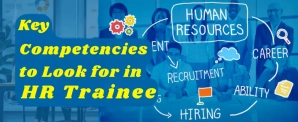Category
What is Training?
Training is an important process since it aims to increase the knowledge and skills of employees and enhance performance. It is designed to enhance the competencies, knowledge, or even skills of an individual. Training can be conducted in the form of Workshops, seminars, online classes or practical experience are few formats. The Training objectives are to enhance an individual's overall efficiency and performance in a particular job or position. The feedback and opinions are taken post-training to evaluate whether training objectives are successfully achieved or Not.
Defining Training in HRM
In HRM, training is considered one of the crucial factors in building employees' potential and making them capable of meeting the ever-changing business requirements. Employees need to be well prepared to face the present and future challenges by ensuring individual potentials are in sync with the overall goals of the organization.
HRM training makes a provision for on-the-job training, workshops, and learning among others. This investment in training by Human Resource Management also improves performance but increases job satisfaction and retention which ultimately reduces the turnover rates. Training is also critical in promoting a culture of learning and innovation within the organization. Use of a wide range of methodologies
Training Definition by Experts
Let’s explore, some of the Expert definitions of "training" from various fields and their statements:
1. Psychology (B.F. Skinner, Behaviorist) "Training is the process of reinforcing desired behaviors through controlled stimuli and rewards, with the goal of shaping behavior to meet specific standards or objectives."
(The training definition given by Skinner shows the emphasis on the role of reinforcement in learning and behavior modification.)
2. Education (John Dewey, Educational Philosopher) "Training involves guiding an individual through systematic exposure to tasks, practices, or activities in order to develop skills, knowledge, and critical thinking abilities, fostering both intellectual and moral growth."
Dewey definition of Training is about the connection between experience and learning in educational settings.)
3.Business (Peter Drucker, Management Expert) "Training is the process by which an organization prepares its employees to perform specific tasks or acquire new skills that improve both individual performance and organizational effectiveness."
(In this definition Drucker is highlighting the alignment of individual skills and goals with organizational goals.)
4. Human Resources (Dave Ulrich, HR Expert) "Training is a deliberate effort to enhance employees' skills and competencies in alignment with the strategic goals of the organization, focusing on both personal development and professional capabilities."
(Here Ulrich links training to human capital management and organizational development.)
5.Edwin B.Flippo (an HR Expert & author of books on personnel management) defines ‘’training is the act of increasing the knowledge and skills of an employee for doing a particular job’’.
We concluded that all the experts described training in their ways. Still, common themes across all definitions include skill development, improvement through structured processes, and a focus on achieving specific outcomes.
Training Meaning & Definition
Training is a structured activity for enhancing employees’ knowledge and skills. Training works on methodical procedures for transferring technical know-how to the employees to do a specific job efficiently. It helps in acquiring new technical skills & knowledge and helps in developing problem-solving abilities through systematic training methods and programs.
Objectives of Training
The objectives of training are to enhance employee performance by building new skills, and knowledge and develop individual capabilities to meet organizational goals, improve productivity, and build a safe and efficient work environment. Here, we have detailed pointwise a few of the important training objectives:
- Training increases the knowledge of the employees for doing a specific job.
- Training objectives are to add new technical skills to the workers to learn quickly and handle their jobs more efficiently.
- Training helps in improving performance and meeting the organization's business goals.
- Training brings a change in the attitudes of the employees or workers toward their fellow workers Managers and also the management of the organization.
- Training improves the ability of the workers to handle man, machines, and material efficiently which reduces wastage of time and resources.
- One of the major objectives of training is to reduce accidents and mishandling of equipment by providing safety training to workers.
- The training objective is also to plan and prepare employees for the next higher job roles.
Features of Training
- Training is a motivational tool
- Training is primarily job-related and need-based to improve the performance of the employee
- An organized preparation and advancement program guarantees that representatives have a predictable ordeal and foundation information
- It Enables the representatives to manage the changing employments and parts
- Develop knowledge, skills, and attitude for handling jobs most efficiently
Benefits of Training
- Workers are helped to focus, and priority is placed on empowering employees
- Productivity is increased, positively affecting the bottom and middle line.
- Employee morale and the job satisfaction improves
- Employee confidence is constructed, keeping and creating key entertainers, empowering group improvement, and adding to better group/association spirit.
- Productivity and Proficiency of employee/ Department improves as the HR department can develop appropriate career charts for each employee
- Employees are kept current on new job-related information, thereby contributing significantly to better customer service.
- The trained employee stands to gain tremendously as his/her profile and market value improves. Corresponding gains occur to the organization.
- Processes increase in efficiency, resulting in financial gain.
- Employees are updated on new and enhanced skills, with a view to aligning them to business goals and objectives.
- Organizations with business issues are given a crisp or impartial expert supposition or investigation, assessment, or study.
- After a downsizing, remaining workers are given the technical and management skills to handle increased workloads.
- Job satisfaction, employee motivation, employee engagement and morale are increased, reducing employee turnover.
Training vs. Development
Training is a tool that supports improvising the specific skills relating to the job whereas Development aims at improving the total personality of an individual. Training once imparted can develop the specific skill and therefore its repetition may be required, for up-gradation. In the case of development, there is no ceiling, and may be required repeatedly as it is an ongoing continuous process. The training seeks to meet the current requirements of the jobs of the individual, whereas development aims at meeting the future needs of the job and the individual. Development however is more of a proactive process
Employee Training in an organization is mainly job-related; it aims at maintaining and improving current job performance. In fact, it is considered the only tool of the human resources department through which learning and change can bring in an organization.
Latest JobsView All
-
 Technical Support Engineer/Manager- Adh... Delhi 22 Nov 2025
Technical Support Engineer/Manager- Adh... Delhi 22 Nov 2025Ascent Human Solutions Pvt. Ltd..
-
 Commercial Assistant ... Latur 20 Nov 2025
Commercial Assistant ... Latur 20 Nov 2025Ascent Human Solutions Pvt. Ltd..
-
 Executive / HR Executive - Human Resour... New Delhi 22 Nov 2025
Executive / HR Executive - Human Resour... New Delhi 22 Nov 2025Ascent Human Solutions Pvt. Ltd..
-
 Assistant/Deputy Manager - Sales DEA (D... Gurgaon 21 Nov 2025
Assistant/Deputy Manager - Sales DEA (D... Gurgaon 21 Nov 2025Ascent Human Solutions Pvt. Ltd..
-
 Executive sales... New Delhi 20 Nov 2025
Executive sales... New Delhi 20 Nov 2025Ascent Human Solutions Pvt. Ltd..
RELATED ARTICLES
-
Law & Compliances Integrating Local Law 152 Gas Inspections Into Your Annual B... Explore
-
Human Resource Key Competencies to Look for in HR Trainees Explore
-
-
Performance management Employee Happiness and Workplace Happiness 2025 Explore
-
Performance management Boosting Employee Engagement and Knowledge Retention through... Explore
-
Human Resource Why Employee Voice Matters? Explore
-
-
-
Human Resource HR Planning - How to Manage Your Leave Policy Structure Explore
-
Human Resource Mastering Leadership: The Three C's of Success Explore
-
-














